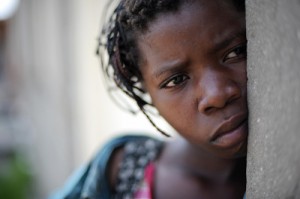 500,000 women raped in Rwanda. 64,000 in Sierra Leone. 40,000 in Bosnia-Herzegovina, 4,500 in the Democratic Republic of the Congo. “Numbers are numbing,” warns Nobel Laureate Jody Williams. “There are women in here who have experienced sexual violence in conflict.”
500,000 women raped in Rwanda. 64,000 in Sierra Leone. 40,000 in Bosnia-Herzegovina, 4,500 in the Democratic Republic of the Congo. “Numbers are numbing,” warns Nobel Laureate Jody Williams. “There are women in here who have experienced sexual violence in conflict.”
Many heads nod somberly throughout the conference room. Women who have been forever affected by violence of the most violating kind. Women who work day in and day out with victims of unimaginable cruelty.
This is a gathering where horror and hope walk hand in hand.
Hope wins, or we wouldn’t be here. Hope–fueled by the rock-hard conviction that it’s possible to create a world where the atrocity of rape in war does not exist because societies have closed ranks to never again permit it. Hope and conviction that with concerted effort we can root out the causes, prevent new crises, stop the abuses and attend to the consequences.
We begin with some definitions of terms, laid out by the three conveners, Nobel Laureates Williams, Shirin Ebadi of Iran and Mairead Maguire of North Ireland.
First, “This is not an attempt to make war safe for women,” Williams notes.
No disagreement there, since all of us share the implied assertion that war is by definition not safe for anyone and should not exist at all. The point is necessary, though, because it serves as a reminder that the fight against gender violence in conflict is a deep struggle against militarism–its logic and its manifestations. The patriarchal systems that use rape as a weapon in war form a pillar of that logic. When we resist and reject sexual violence in conflict, we are rejecting the logic of domination.
This logic is so deep-seated that upholding the law is also insufficient as a goal of this conference. Shirin Ebadi recounts the ways in which violence against women pervades societies and in her country and others is even codified in the law. For every woman who has received the criminal punishment of stoning, another five await. She urged the group to come up with a roadmap to overcome it. Even with a map, no one believes the journey will be short or easy.
Next a third Nobel Peace Prize winner spoke from a giant video screen. There was an eerie power in Aung San Suu Kyi’s words, since they emerged in the Quebec countryside from behind the repressive walls of a military dictatorship half a world away.
She described the way the Burmese military uses rape as the weapon of choice against those who seek to live in peace, especially against ethnic nationalities. She explained how rape in her country rends both the bodies of women and the body politic.
“Every case of rape divides our country–between people, between genders, between armed forces and ordinary citizens, between ethnic nationalities…”
As the morning went by, many women in the room felt inspired but perhaps a little overwhelmed. Where to start on such a mammoth task? Mairead Maguire urged us “to have the courage to try to think in a different way… It is the mindset that must change.” She urged alternative forms of conflict resolution, money for education, health and environment instead of war.
“Some say we’re talking to the converted here, but I believe every person is a center for non-violence. And I’ve seen the power of women.”
This is a start. The goal—to end rape in war—is ambitious, but the immediate aim is to set out together and with direction.
If there’s one thing every one of the more than a hundred women in the room knows how to do, it’s to stand up. In their countries, they stand up for peace, they stand up to say ‘Never Again!’, they stand up to say ‘Ya Basta!’
And standing up is the first step of any journey.
This article first appeared on the Nobel Women’s Initiative website.
Laura Carlsen is director of the Americas Program of the Center for International Policy in Mexico City at www.americas.org.



